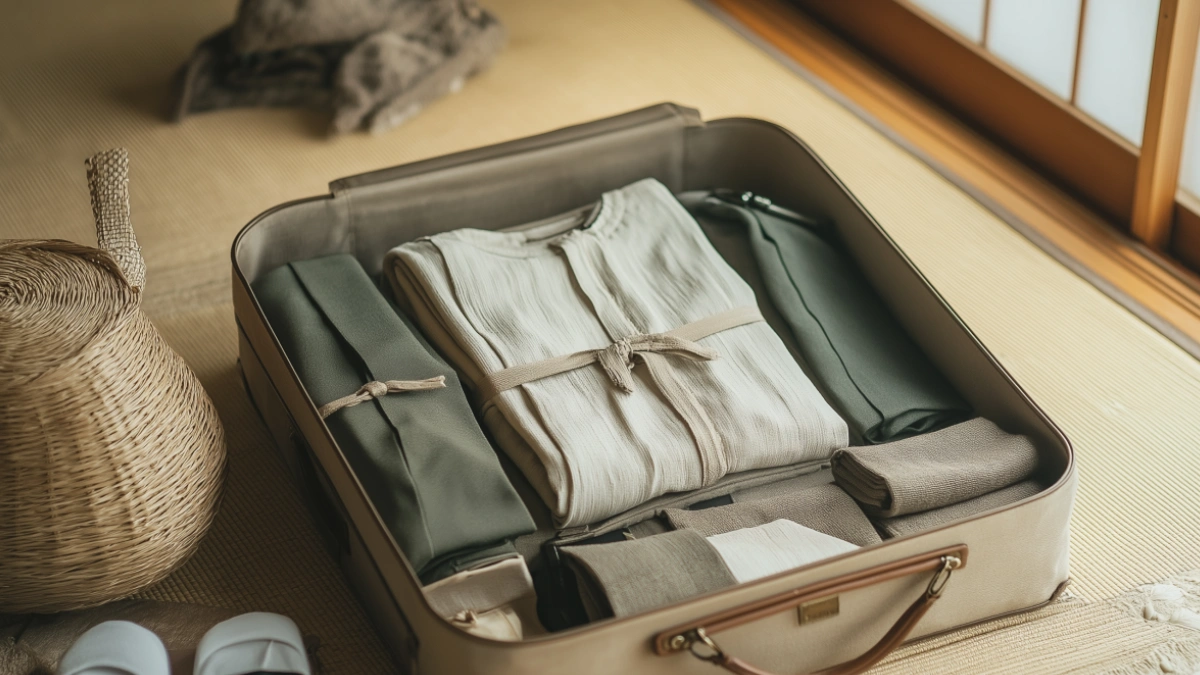Chic and Practical: Japan Travel Outfit Guide for Tourists in Every Season
Table of Contents
Packing for Japan isn’t just about looking good—it’s about blending style, function, and cultural respect. Whether you’re navigating the neon streets of Tokyo, hiking through serene temple paths in Kyoto, or visiting a traditional onsen village in the countryside, your outfit plays a big role in your comfort and travel experience. Japan is known for its attention to detail, and that sensibility extends to fashion, too.
With its four distinct seasons and diverse landscapes, Japan demands an adaptable travel wardrobe. Add to that cultural expectations for modesty in certain settings and the need for comfort during long walks or transit days, and it’s easy to see why tourists benefit from a thoughtful packing plan.
This guide will walk you through the essentials for creating chic and practical outfits for your Japan adventure. From layering tips and weather-specific advice to choosing the right footwear and accessories, you’ll learn how to look polished, stay comfortable, and respect local customs—all while packing light.
Dressing by Season in Japan: What to Pack Year-Round
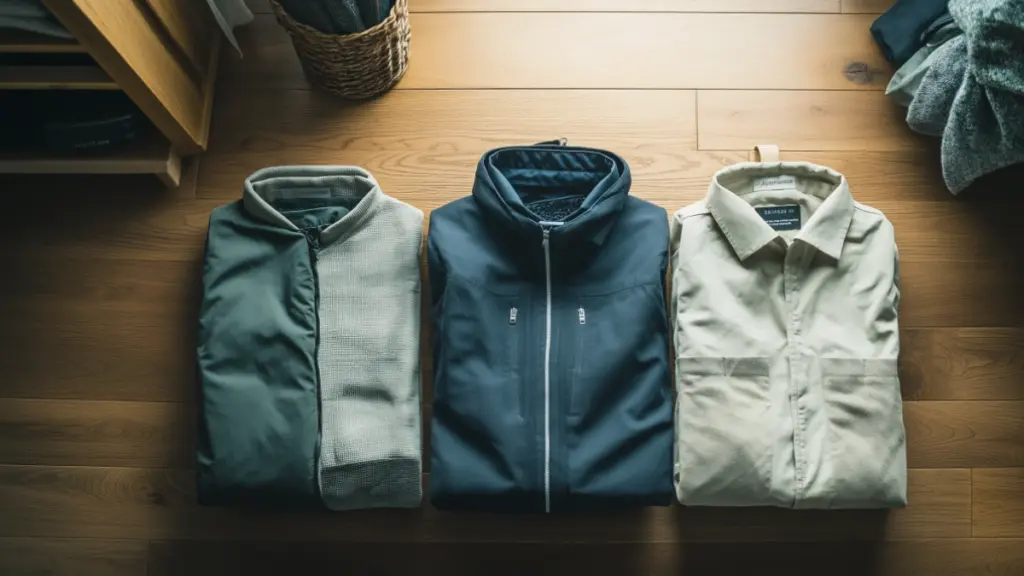
Japan’s seasons are beautifully distinct—and your outfit needs will vary drastically depending on when you visit. Spring offers cherry blossoms and cool breezes; summer is humid and often rainy; autumn dazzles with crisp air and bold foliage; and winter ranges from chilly in Tokyo to snow-covered in Hokkaido.
Each season calls for different layers and considerations, especially in a country where people tend to dress appropriately for the weather while maintaining a clean and modest look.
Table: Seasonal Packing Guide for Japan
| Season | Must-Haves | Notes |
|---|---|---|
| Spring | Light trench coat, scarf, layers | Evenings can be chilly despite daytime sun |
| Summer | Breathable fabrics, sun hat, UV umbrella | Humidity is high; prepare for rain and sun |
| Autumn | Knit sweaters, lightweight jacket, boots | Comfortable layering is key in fluctuating temps |
| Winter | Warm coat, heat-tech base layers, gloves | Snow likely in northern areas; indoor heating varies |
Stylish Yet Comfortable Footwear for Urban and Rural Travel
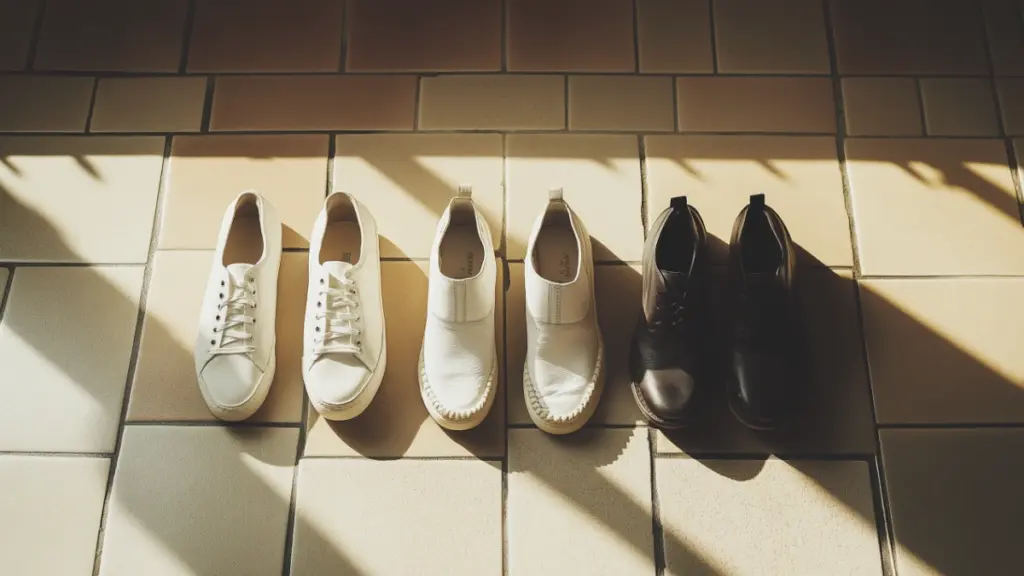
One of the biggest mistakes tourists make is underestimating how much they’ll walk in Japan. Between exploring shrines, navigating train stations, and strolling through neighborhoods, your feet need support. Yet, style still matters—especially in a culture that prizes neat appearance and clean shoes (which may need to be removed indoors).
Opt for chic sneakers, supportive sandals in summer, and ankle boots or waterproof shoes in colder months. Avoid overly worn or bulky hiking gear unless you’re actually on the trail.
Table: Best Footwear Options by Activity
| Activity | Footwear Recommendation |
|---|---|
| City Sightseeing | Sleek sneakers with cushioning |
| Countryside Walks | Trail-style walking shoes or boots |
| Temple Visits | Slip-on shoes for easy removal |
| Rainy Days | Waterproof sneakers or ankle boots |
| Summer Travel | Sporty sandals with arch support |
Respectful and Appropriate Dressing in Cultural Settings
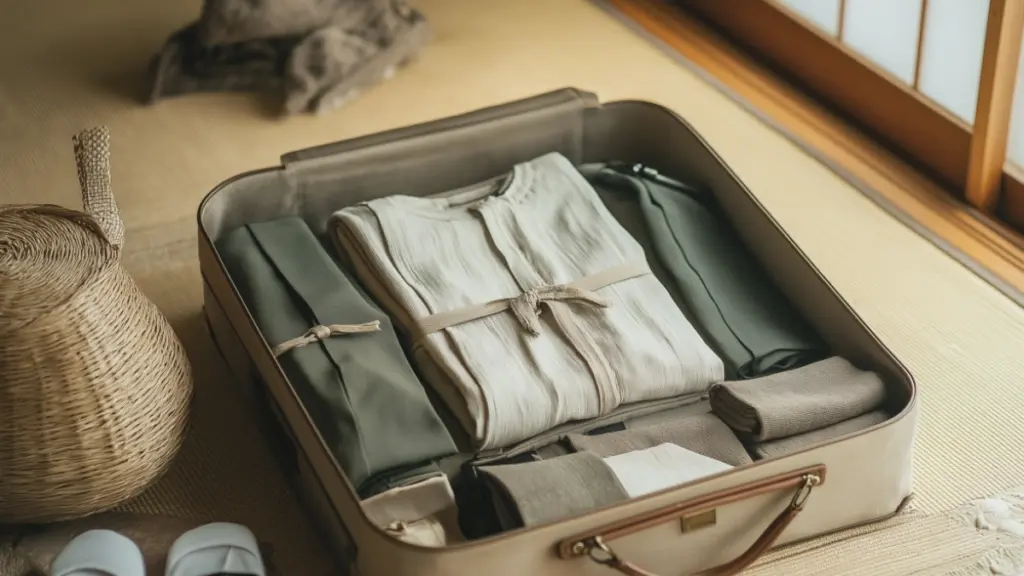
Japan values modesty, particularly in traditional spaces such as shrines, temples, and ryokan stays. Tourists are not expected to wear formal attire, but dressing respectfully goes a long way in earning local goodwill and avoiding awkward stares.
In religious sites, cover shoulders and knees. Avoid plunging necklines or very short shorts. For onsen (hot springs), wear easy-to-remove layers and pack a modest cover-up if using shared changing areas.
Table: Cultural Dressing Etiquette Checklist
| Setting | What to Wear |
|---|---|
| Shrines & Temples | Covered shoulders, long skirts or pants |
| Ryokan | Casual layers, yukata robe provided inside |
| Onsen | No clothing in baths, modest outside attire |
| Train Travel | Neat, odor-free outfits (no gym clothes) |
| Dining Out | Smart casual, avoid tank tops or beachwear |
Building a Capsule Wardrobe for Japan Travel
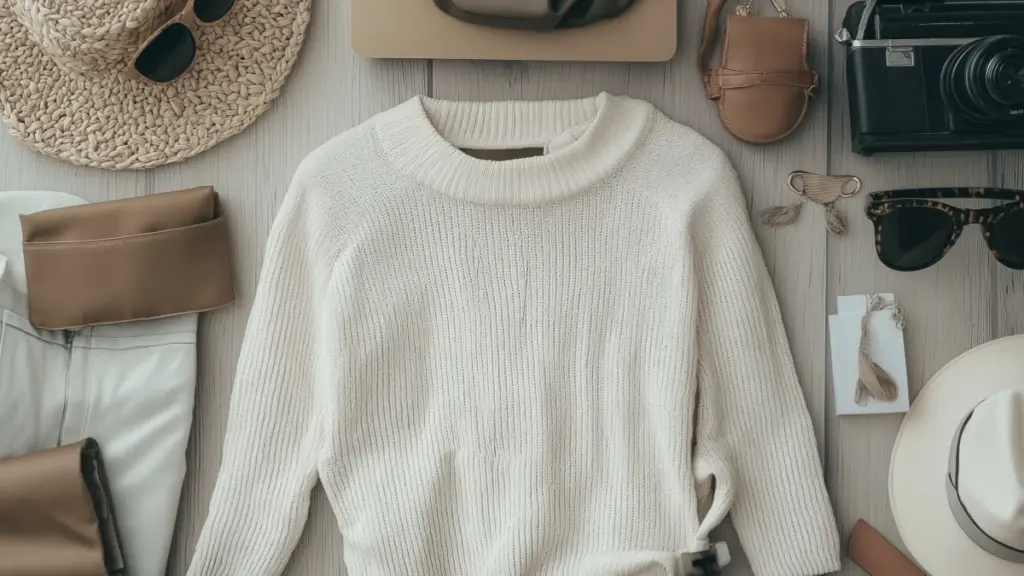
A capsule wardrobe can be a lifesaver when navigating a two-week trip across varying regions of Japan. The key is choosing versatile, mix-and-match pieces that layer well and transition from day to night. Japan’s fashion is minimalist yet expressive—think neutrals with a pop of texture or detail.
Start with a base of breathable tops, a mix of trousers and skirts, a reliable jacket, and essential accessories. Colors like navy, grey, olive, and beige blend beautifully into Japan’s natural aesthetic and urban palettes. Fabrics should pack small, resist wrinkles, and be easy to hand wash if needed.
Accessories like scarves, lightweight hats, and a compact crossbody bag can elevate your look without taking up space. For longer trips, a portable steamer or quick-dry laundry detergent adds flexibility.
Table: Japan Travel Capsule Wardrobe Essentials
| Item | Quantity | Notes |
|---|---|---|
| Tops (breathable tees/blouses) | 4–5 | Neutral tones, light layers |
| Bottoms (trousers/skirts) | 2–3 | Mix casual and semi-formal |
| Outerwear (jacket or coat) | 1–2 | Weather-appropriate, stylish yet functional |
| Footwear | 2 | City sneaker + dressier flat or sandal |
| Accessories | 3–5 | Hat, scarf, bag, minimal jewelry |
Must-Have Accessories for Functional Fashion
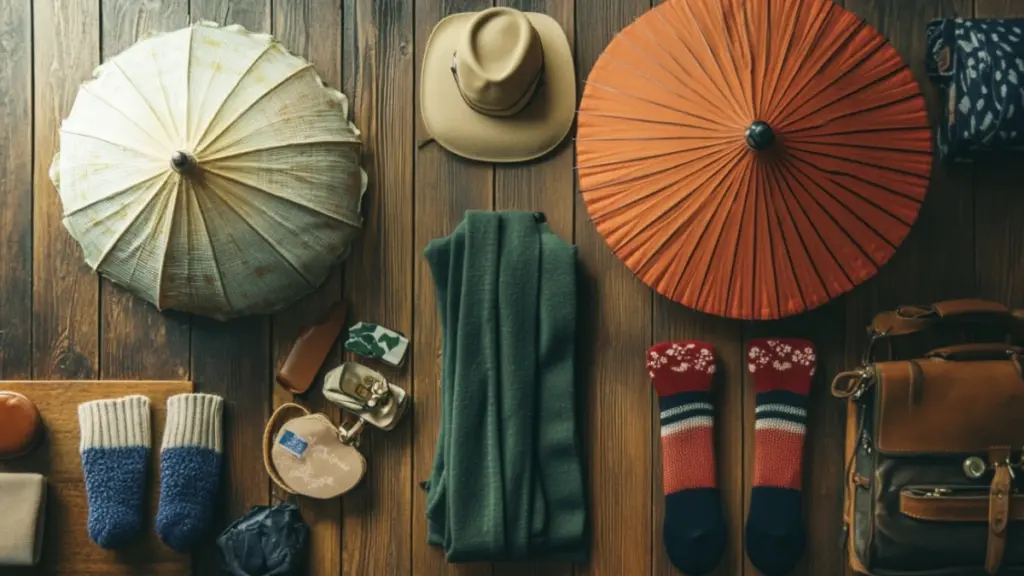
The right accessories don’t just pull your outfit together—they add comfort and utility. In Japan, where convenience and efficiency are a lifestyle, smart packing includes thoughtful extras like UV umbrellas, foldable totes, and moisture-wicking socks.
A lightweight scarf is multifunctional: wear it to cover your shoulders, tie your hair back, or dress up a casual outfit for a nice dinner. A compact umbrella is a daily essential, especially in Tokyo’s summer rain or Kyoto’s unpredictable drizzle. For travelers planning to visit shrines or dine at tatami-floor restaurants, clean socks or foot covers are a must.
Other items worth packing include a reusable water bottle (hydration stations are common), a portable fan in warmer months, and a daypack that fits under your train seat.
Table: Practical Accessories That Complete Your Look
| Accessory | Purpose |
|---|---|
| UV-Blocking Umbrella | Sun protection and sudden showers |
| Lightweight Scarf | Modesty, warmth, outfit polish |
| Clean Socks | Essential for temple or indoor experiences |
| Foldable Tote Bag | Shopping, market visits, eco-friendly option |
| Crossbody Bag | Hands-free, secure, easy access while sightseeing |
Layering Strategies for Comfort and Flexibility
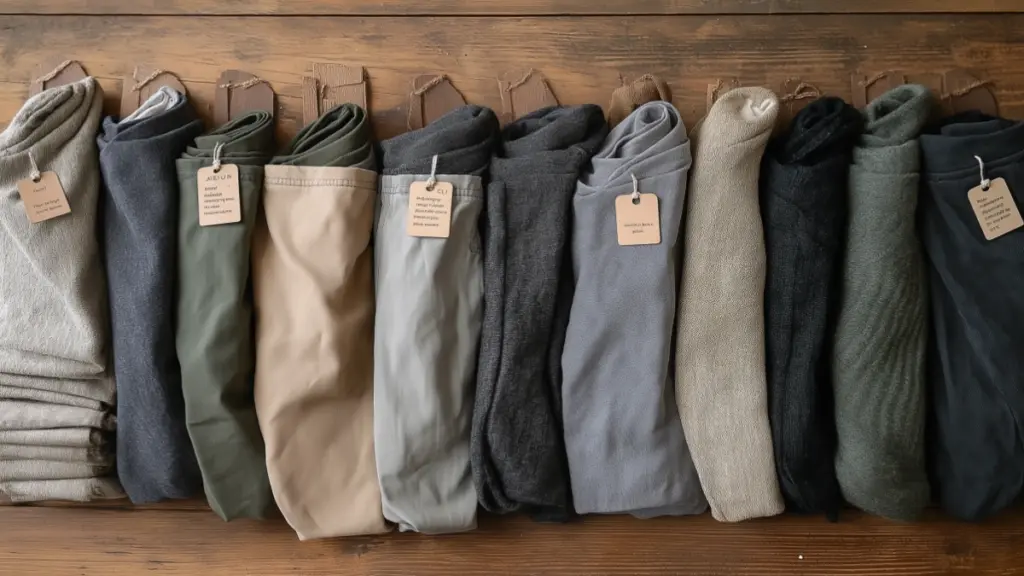
Japan’s weather can shift quickly, especially in spring and autumn. Even within a single day, morning chill can give way to warm sun by midday and breezy evenings. Layering allows you to adjust easily while keeping your outfit cohesive and stylish.
Base layers should be breathable and moisture-wicking—think cotton or bamboo. Add a middle layer like a lightweight sweater or long-sleeve shirt. Outerwear can range from a rain jacket to a structured blazer depending on your destination. Scarves, leggings, and foldable cardigans are your best friends for managing transitions.
Stick to neutral layers that work across outfits and pack pieces that roll tightly in your luggage to save space.
Step-by-Step: How to Layer for a Day Out in Japan
| Time of Day | Suggested Layers |
|---|---|
| Morning | Base layer + cardigan or sweater |
| Midday | Remove middle layer if warm |
| Late Afternoon | Add outer layer (jacket or light coat) |
| Indoor Transit | Light scarf or long sleeves for AC |
| Evening | Outerwear + scarf + closed shoes if chilly |
Packing for Regional Differences: City vs. Countryside
Your travel outfit needs will vary depending on whether you’re exploring Tokyo’s fashion-forward streets or soaking in a quiet hot spring town. Cities like Osaka, Tokyo, and Kyoto lean stylish and urban—think structured coats, clean sneakers, and monochrome color schemes. In the countryside, comfort and practicality take priority, but there’s still attention to neatness.
Countryside destinations may involve muddy paths, cooler temperatures, and fewer convenience stores, so packing a raincoat, hat, and durable walking shoes is wise. Consider local etiquette too—many ryokan expect indoor slippers, and onsen visits require simple, modest loungewear.
Table: Regional Japan Travel Outfit Suggestions
| Region | Outfit Approach |
|---|---|
| Tokyo/Osaka | Urban chic—monochrome outfits, stylish sneakers |
| Kyoto | Elegant and classic—flowy fabrics, neutral tones |
| Countryside | Practical—layers, sunhat, waterproof items |
| Mountains | Warm base layers, gloves, durable footwear |
| Coastal Towns | Windbreaker, relaxed pants, moisture-friendly shoes |
Conclusion
Planning your Japan travel outfits isn’t just about style—it’s about strategy, respect, and comfort. With thoughtful layering, a modest approach, and a well-planned capsule wardrobe, you’ll be ready for every setting and season Japan offers. From high-tech cities to tranquil temples, your clothing can help you connect with the culture and enjoy your journey without stress. Dressing well in Japan means dressing with intention—and that’s a beautiful way to travel.

